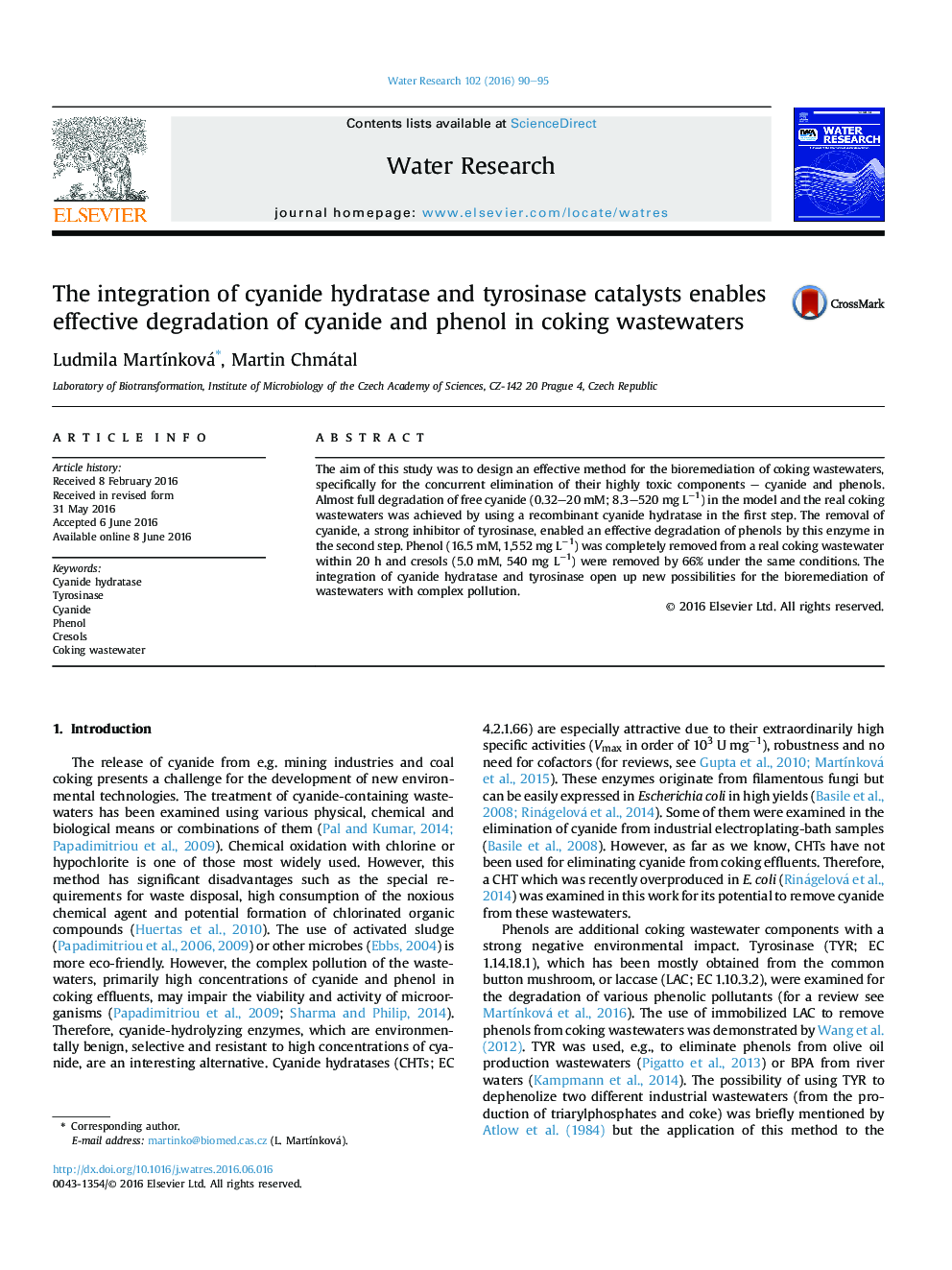| کد مقاله | کد نشریه | سال انتشار | مقاله انگلیسی | نسخه تمام متن |
|---|---|---|---|---|
| 4480842 | 1623066 | 2016 | 6 صفحه PDF | دانلود رایگان |
• Recombinant cyanide hydratase (CHT) was active in coking effluents.
• Cyanide was almost completely degraded in this environment by CHT.
• CHT alleviated tyrosinase (TYR) inhibition by cyanide.
• This enabled TYR to degrade phenol and cresols in coking effluents.
• This method paves new ways for the remediation of heavily polluted wastewaters.
The aim of this study was to design an effective method for the bioremediation of coking wastewaters, specifically for the concurrent elimination of their highly toxic components – cyanide and phenols. Almost full degradation of free cyanide (0.32–20 mM; 8.3–520 mg L−1) in the model and the real coking wastewaters was achieved by using a recombinant cyanide hydratase in the first step. The removal of cyanide, a strong inhibitor of tyrosinase, enabled an effective degradation of phenols by this enzyme in the second step. Phenol (16.5 mM, 1,552 mg L−1) was completely removed from a real coking wastewater within 20 h and cresols (5.0 mM, 540 mg L−1) were removed by 66% under the same conditions. The integration of cyanide hydratase and tyrosinase open up new possibilities for the bioremediation of wastewaters with complex pollution.
Figure optionsDownload high-quality image (107 K)Download as PowerPoint slide
Journal: Water Research - Volume 102, 1 October 2016, Pages 90–95
